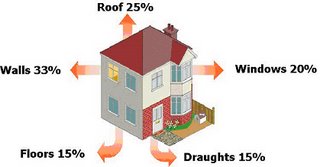HIGHLIGHTS
The BoC leaves rates unchanged at 4.25%
Small cut in policy rates still in the cards
for 2007 despite rising core prices
Further evidence of U.S. mid-cycle slowdown
Dow Jones hits the 12,000 mark
Big week for Canadian monetary policy
There were a lot of new developments surrounding Canadian monetary policy this week. First, the Bank of Canada announced on Tuesday that it was maintaining the overnight rate at 4.25%. Since this decision was widely expected, it is the accompanying statement that caught financial markets’ attention. Notably, the Bank revised down its real GDP growth forecasts for the remainder of 2006 and 2007.
Everything else being equal, weaker economic growth would translate into less accumulation of slack in the economy, thereby increasing market expectations for eventual rate cuts. But, the Bank has also lowered its estimate of potential output growth – i.e. the growth in production the Canadian economy can achieve with existing labour, capital, and technology without accelerating inflation. Putting the two together, the Bank estimates that the economy is still operating slightly above capacity.
The downward revision to potential output growth was explained in more detail in the Monetary Policy Report (MPR) released two days later. In particular, the Bank now assumes weaker trend labour productivity growth – 1.5% per year instead of 1.75% – because of structural changes in the economy. Combined with growth of 1.25% in trend labour input implies potential output growth of 2.8%, an estimate that TD Economics agrees with. Back in October 2005, we warned about this risk. In a special report entitled “Key Issues Arising from the Bank of Canada’s MPR”, we argued that productivity trends could have crucial implications for the future path of monetary policy. In particular, we said that “the estimate of potential could adjust to actual developments fairly quickly and any failure of labour productivity to accelerate as anticipated could easily result in the Bank lowering its assessment of potential in 2007”. This risk has materialized, just a notch earlier than we anticipated.
As a result of both downward revisions to actual and potential output growth, the Bank expects the economy to run slightly above its capacity for the next two years. In such an environment, the Bank would not be inclined to alter monetary seetings. Certainly, Friday’s CPI inflation report for the month of September corroborates with the Bank’s neutral bias. Core prices rose by a greater-than-expected 0.5 per cent from the previous month, lifting the year-over-year tally to 2.3% – above the Bank’s target of 2%.
We still see modest cut in rates in early 2007
With September’s brisk increase in core prices, the odds are very high that the Bank will stay on the sidelines at the last policy meeting of the year on December 5th. Admittedly, the odds that the Bank keeps rates unchanged in the early stages of 2007 also increased a notch. Still, TD Economics sticks to its call of a modest reduction of 25 basis points in each of the first two quarters of 2007. Why? The answer lies in the fact that our base-case scenario has factored in weaker economic conditions than the Bank over the next few quarters. The Bank believes Canadian real GDP growth will start gaining ground in the last quarter of 2006, whereas we believe it will not happen until the second half of 2007 (see table on page 1). In this context, we believe a small cut of 50 basis points in policy rates would help ensure that the economic slowdown remains moderate.
Further evidence of a modest U.S. economic expansion
This week provided more evidence that the U.S. mid-cycle slowdown is far from over. Housing starts rose unexpectedly by 5.9% in September, but are still 18% lower than the same time last year. Furthermore, residential building permits fell by 6.3% in September to its lowest level since October 2001. On that basis, we believe that September’s rise in starts was a blip and that the cooling U.S. housing market has not hit the bottom yet. Look for weaker homebuilding activity down the road. September’s U.S. CPI report also provided evidence of moderation. First, the sharp drop in energy prices drove down headline inflation from 3.8% to 2.1%. But what matters more for the Fed is the third consecutive monthly increase of 0.2% in core prices. This figure is less worrisome in comparison of the March-June period, when core prices were rising at a brisker pace of 0.3% per month. The annualized pace of inflation during the July-September period now stands at 2.7%, a full percentage point lower than this summer. This development appears consistent with the overall capacity utilization rate, which slipped from to 81.9% in September from 82.5% in August.
September was not a good month for U.S. industrial production, which fell for the first time in 8 months by 0.6 per cent. Altogether, this string of economic indicators is consistent with our view that the U.S. mid-cycle slowdown is underway this fall, which will eventually push the Fed to cut fed funds rate by a full percentage point over the first half of 2007.
The Dow is on a roll this year
However, the big news of the week in U.S. financial markets was not the Fed’s intentions, but rather the performance of the Dow Jones Industrial Average index. The Dow ended Thursday slightly above the 12,000 points mark for the first time ever (note, however, that the Dow pulled back below the 12,000 mark in early trading on Friday). The Dow has provided a 10-per-cent cumulative return on investment since the beginning of the year, fueled by rising corporate profits and falling energy prices. However, investors who have held U.S. equities in their portfolio for a long period of time may see things differently. Indeed, it took seven and a half years for the Dow to move up to 12,000 since it hit 11,000 for the first time in the summer 1999. Thereafter, the burst of the high tech bubble and the 2001 U.S. recession hurt investors’ holdings. This explains why the cumulative return of the Dow was a mere 9 per cent over the last seven and a half years. In comparison, it took only four years for the Dow to move up from 4,000 to 11,000 points in the second half of the 1990s – for a cumulative return of 175 per cent. Still, U.S. equities should remain part of a well-diversified portfolio over the long haul because of stronger growth potential in productivity and population gains relative to many other industrialized countries. On that front, it was just announced on Tuesday that the U.S. population surpassed the 300 million mark.
This article is courtesy of Paul Chadwick, TD-Canada Trust
For more information please contact A. Mark Argentino
A. Mark Argentino Associate Broker, P.Eng.,
Specializing in Residential & Investment Real Estate
RE/MAX Realty Specialists Inc.
2691 Credit Valley Road, Suite 101, Mississauga, Ontario L5M 7A1
BUS 905-828-3434
FAX 905-828-2829
E-MAIL mark@mississauga4sale.com
Website: Mississauga4Sale.com













